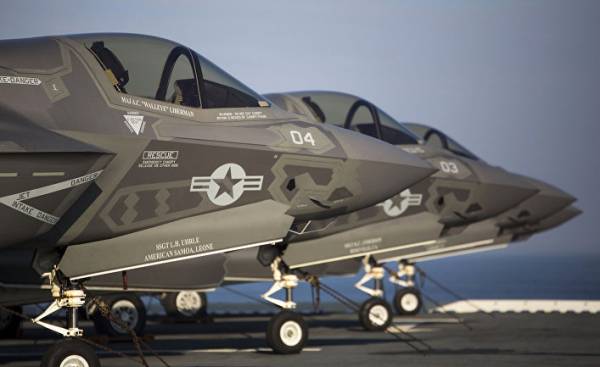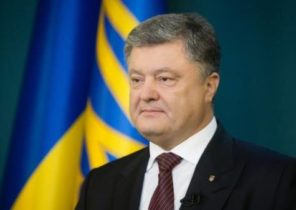
The command of the US Navy are absolutely confident that the American aircraft carriers and their aircraft wings will be able to fight and fly in areas defended by the weapons of interdiction of access/blocking areas (A2/AD). Russia, China and to a lesser extent, Iran are developing a multi-tiered system of anti-ship and anti-aircraft defense that could prevent the U.S. Navy to close to their coast.
According to the command of the US Navy, system A2/AD exists since the first days of the history of wars and battles, when primitive man fought with stones and spears. Over time methods of preventing/blocking zone improved in connection with the development of technology, and the range and striking power of the weapon increased. In place of the stones and spears came bows and arrows, then muskets and cannons. Thus, the invention of anti-ship cruise and ballistic missiles, long-range it’s just another stage in the development of A2/AD.
“This is the next act, said chief of staff U.S. Navy Admiral John Richardson (John Richardson), giving 25 August in his office an interview with The National Interest. This A2/AD, well, it definitely is a goal for some of our competitors. But achieving this goal is another matter. It will be much harder.”
As noted by many military leaders of the U.S. Navy, including Richardson and Director control of aircraft armament rear Admiral (senior level) of DeWolfe Miller (DeWolfe Miller), space interdiction of access/blocking zone, defended by a Chinese anti-ship ballistic missile DF-21D and DF-26 and Russian supersonic anti-ship missiles “Bastion-P” are not insurmountable “iron domes”. And the formidable anti-aircraft missiles like the Russian s-400 and the Chinese HQ-9 does not completely prohibit the flight of aircraft carrier-based aircraft in covered areas.
Richardson gave an unequivocal answer to the question, is he confident in the ability of aircraft carriers and their aircraft to conduct combat operations in areas A2/AD to defend anti-ship cruise and ballistic missiles, modern air defenses. “Yes,” he said, but because of the need to preserve military secrets did not specify exactly how they will do it. “It’s a whole range of possibilities, but I think we do too much talking in the open about what we do. I would be more attentive to the conversations on such topics, not to give our opponents any advantage”.
Meanwhile, Miller, who gave an interview to The National Interest on August 23, directly responded to the criticism of modern carrier-based aircraft. The essence of this criticism boils down to the fact that after the removal of the weapons of the aircraft Grumman A-6 Intruder and tanker aircraft KA-6 range naval aviation seriously diminished. “I don’t think so,’ said Miller. — I believe that the range of carrier strike group actually increased compared to what it was before. And if you look at the accuracy caused by us strikes, and compare it with where I started — with A-6 and A-7 — the accuracy of carrier-based aircraft also rose significantly”.
Improved flight technical and combat characteristics of aviation units Miller explains the emergence of new technology such as advanced targeting system container type, long-range weapons used out of reach of enemy weapons, and naval integrated fire control and the conquest of the air (NIFC-CA). System NIFC-CA, the first version of which is already accepted on arms, allows any component of the strike group to act as a detection means or means defeat for the other component of this group. So, carrier-based electronic warfare aircraft EA-18G Growler Boeing can transmit data targeting systems on Board F/A-18E/F Super Hornet, which then uses its on-Board weapon and striking a specified target.
The aircraft carrier “Theodore Roosevelt” became the first ship, which has been applied an initial version of the system, integrated fire-control and the conquest of the air, NIFC-CA, Miller said. Soon it will be installed on another aircraft carrier. However, Miller refuses to call the NIFC-CA system. According to him, this is a new technology that allows you to combine existing tools and capabilities, and to provide a comprehensive picture to all who need it. This means that over time, NIFC-CA will connect additional battle tools and appliances, providing even more comprehensive view of the theatre of war.
Although Miller and Richardson were quite satisfied with the current state of carrier-based aircraft, with the appearance in the composition of the wings of a single strike fighter F-35C Lockheed Martin and unmanned tanker aircraft MQ-25 Stingray striking power of aircraft carriers has significantly increased. Miller appreciated the F-35S, although sailors are very cool to say about the capabilities of this single-engine fighter of darkness.
“The F-35 is a quantum leap in air superiority. This low vulnerability supersonic aircraft with the manoeuvrability of a fighter and has an incredible, revolutionary set of sensors, said Miller. — This gives it the characteristics of the fifth generation, and we will use it in conjunction with the aircraft E-2D that allow to improve the combat controls. There also appears jammer new generation NGJ, which will be used in combination with a fourth generation.”
In the end, the combination of F-35C, E-2D, EA-18G, and NGJ F/A-18E/F should enhance the qualitative characteristics of aircraft wings, said Miller. Compared to today’s air wings carrier air wing sample of 2025 will have a more sophisticated means of command and control, active electronic countermeasures, weapons greater range and new strike capabilities possessed by the F-35C. “When the F-35C will be adopted in the wings, it will, I think, a powerful weapon, Miller said. — It will be combined with funds fourth, fifth generation and what I just told you”.
At the initial stage in the composition of the air wing carrier air wing is one squadron of F-35C plus two squadrons of Super Hornet and one unit of F/A-18C Hornet. Over time, the legacy squadron of F/A-18C can be replaced by the third squadron of cars Super Hornet. Responding to a question about whether consisting of wings of two squadrons of F-35C, Miller said: “Maybe. I think it needs to say its word budget. But we need to start with at least one”.
According to Miller, the Navy has not yet decided how the F-35 will integrate into the structure of the wing so that it could fight as a single unit. He believes that joint work of the various components of the wing will depend on the situation. However, Miller noted that the EA-18G and F-35C will support each other in the fight against modern threats. “We still have to determine how to conduct the process of integration in the structure of the aircraft, Miller said. I am confident in the capabilities of the F-35”.
Another crucial element of the wing carrier-based aircraft will be MQ-25 Stingray. The focus in this project will be given to airframe, but the project itself is much broader, said Miller. In the framework of on Board of an aircraft carrier is a whole infrastructure supporting operation of unmanned aircraft into the sea, and developed the necessary elements for combat control of these machines. This is extremely important for future actions of unmanned carrier-based aircraft.
The main task of MQ-25 will be air refueling to increase range carrier-based aircraft. There will be a minor task: conduct reconnaissance and surveillance. According to Miller, replacing the Super Hornet and speaking as a tanker, MQ-25 will increase the striking power of the aircraft carrier due to the fact that will allow six aircraft F/A-18E/F to fulfill its main objectives. “Simply including an MQ-25 part of our wings, we can increase the striking power of carrier-based aircraft, — said Miller. — Continuous conduct of reconnaissance and surveillance will increase the durability of the carrier strike group because of her inquisitive eyes, which is very important in the conduct of military actions in the disputed waters.”
The carriers themselves also evolve, after a long journey from the first nuclear strike aircraft carrier “enterprise” and “Nimitz”, which became the first of the ten ships of the class, CVN-68, which make today a basis of a carrier-based fleet. Soon the combat strength of the fleet will include aircraft carrier “Gerald Ford” (CVN-78), which represents a quantum leap forward in technology. He will have a huge capacity for electricity generation, it will be applied to new technology take-off and landing aircraft, and it will have great potential for development. Thanks to the ships of the type “Ford” aircraft carrier fleet will remain important for many years to come.
Miller said that the danger to carriers existed since the dawn of naval aviation. They were especially serious during the cold war, when the Soviet Union was whole regiments of Tu-22M3, as well as the submarines of project 949 “Granit” with powerful cruise missiles, the main task was to search for and destroy American carriers. Navy found ways to counter the Soviet threat then, the carrier fleet will be able to adapt to combat in the future.
“If this interview took place 22 years ago, the threat would still exist, Miller said. — The nature of war and the concept of preventing access/blocking zone has not changed, I want to emphasize this. I don’t want to downplay, but we are improving the tools of information warfare, electronic warfare, combat gear, weapons systems mentioned earlier. Plus, we teach people to use available forces and means. Our carrier battle groups will create safe neighborhoods, we will fight in these areas, and we will have a highly mobile force.”
Richardson also believes that aircraft carriers will remain important in the foreseeable future. He noted that the enterprise first came on active duty during the Cuban missile crisis in 1962, but retained its importance and usefulness for many years in a changing international environment through a series of upgrades. Even on the day of cancellation in December 2012 the enterprise as a warship was as efficient as during the first access to the sea. The same thing will happen with carriers of the Ford. “That’s our forecast — said Richardson. They will undoubtedly make a great contribution.”
Dave Majumdar is editor of the National Interest, covering military issues.







